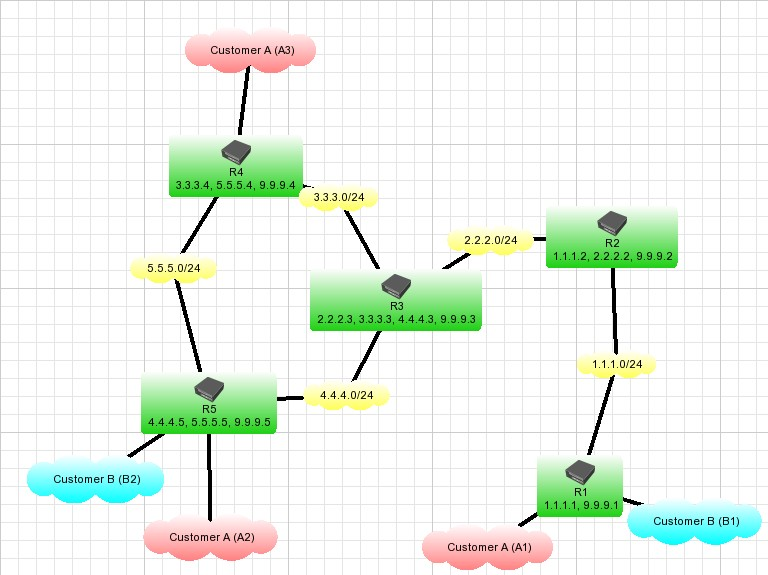Manual:BGP based VPLS
Overview
MPLSVPLS page covers general introduction to VPLS service and configuration of LDP based VPLS tunnels. Due to their static nature LDP based VPLS tunnels have scalability issues that arise when number of VPLSes and sites participating in VPLSes grow. One of the problems is the requirement to maintan full mesh of LDP tunnels between sites forming VPLS. In case number of sites in VPLS is high, adding new site to existing VPLS can become burdensome for network administrator.
BGP based autodiscovery and signaling of VPLS tunnels can help to avoid complexity of configuration at the expense of running BGP protocol between VPLS routers. In general, BGP based VPLS serves two purposes:
- autodiscovery: there is no need to configure each VPLS router with all remote endpoints of VPLS tunnels, provided there are means to deliver BGP multiprotocol NLRIs between them - routers figure out remote endpoints of tunnels from received BGP Updates;
- signaling: labels used for VPLS tunnels by remote endpoints are distributed in the same BGP Updates, this means there is no need for targeted LDP sessions between tunnel endpoints as in case of LDP signaled VPLS.
For example, if LDP signaled VPLS is used, adding new site to existing VPLS would mean configuring router that connects new site to establish tunnels with the rest of sites and also configure all other routers to establish tunnels with router connecting this new site. BGP based VPLS, if configured properly eliminates need to adjust configuration on all routers forming VPLS.
The requirement to exchange BGP NLRIs between VPLS routers means that either full mesh of BGP sessions need to be established among routers forming VPLS or route reflector must be used. In case full mesh of BGP sessions are established between VPLS routers, the benefits of BGP based VPLS over LDP signaled VPLS are questionable - when new site is added to VPLS, BGP peer configuration still needs to be entered on every router forming given VPLS. When BGP route reflector is used, adding new site to VPLS becomes more simple - router connecting new site must only peer with route reflector and no additional configuration is required on other routers. Taking into account that route reflector can also be one of routers forming VPLS, there is no need for additional separate equipment. Of course, scalability and availability concerns still must be taken into account - multiple route reflectors can be used for backup purposes as well as for distributing information load.
The drawback of running BGP based VPLS is requirement to configure BGP which requires that network administrator has at least basic understanding of BGP, its multiprotocol capabilities and route reflectors. Therefore it is advised to implement LDP signaled VPLS if amount of sites and VPLS networks is small, topology is more static - that is, benefits of using BGP are not obvious.
BGP based VPLS is documented in RFC 4761.
Example network
Consider the same network as used for LDP signaled VPLS example MPLSVPLS:
The requirements of customers A and B are the same - ethernet segments must be transparently connected. Taking into account simplicity of given network topology Service provider has decided to use R5 as route reflector and to have no backup route reflector.
